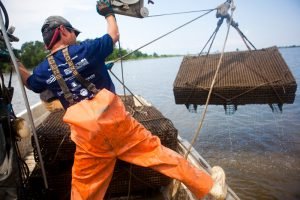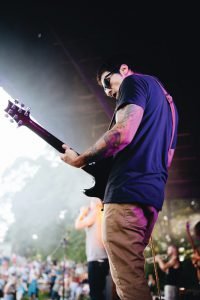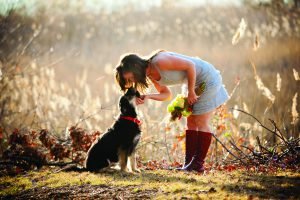+ By Leigh Glenn
Something magical happened in that black-and-white photography class in high school; in the darkroom, the image of a young man—her then-boyfriend—came to life in the developing bath. It showed one moment in an ordinary day, of him leaning against his car, and yet, there she was bringing it back to life, the passage of time between the shutter click and, days later, the processing and what she was feeling, all combining to make it art. The young man is long gone, and with him the photo that married Amy Raab to life as a photographer.
In a family of artists who were passionate about cameras—her father with his stills, her grandparents with their movies—maybe it was inevitable that Raab would become a photographer. Woman and camera, art and life, they’ve been inseparable ever since that high-school photography class, and now, without necessarily intending to, she has fostered older daughter Sophie Macaluso’s interest in images.
 If that high school photography class was Raab’s “love at first sight” and engagement, then studying in Italy while majoring in English and art at the University of Vermont was the wedding and honeymoon. Raab brought only black-and-white film with her, and upon returning to Vermont, began publishing a photojournalistic commentary of her time in Italy for the school newspaper.
If that high school photography class was Raab’s “love at first sight” and engagement, then studying in Italy while majoring in English and art at the University of Vermont was the wedding and honeymoon. Raab brought only black-and-white film with her, and upon returning to Vermont, began publishing a photojournalistic commentary of her time in Italy for the school newspaper.
One day, a fellow student approached Raab to thank her for her Italian journal. The woman said that Raab’s work lessened her own fears about her planned trip to Italy. “In that moment, I learned I can affect people in a quiet way . . . by sharing my experiences,” says Raab.
After graduation, she pressed the photo editor at the Tab chain of weeklies around Boston to let her work for him until he relented. No internship had been advertised, but Raab ended up filing contact sheets for him and getting his job as photo coordinator when he left. She oversaw four staff photographers and a gaggle of freelancers. She also served as a photographer and assisted with wedding shoots on weekends.
Raab could never see herself in a nine-to-five mold because it felt too restrictive. She enjoyed the way the camera and her work opened doors that usually remain closed. “I loved going out in the real world every day,” she says. “I loved the freedom, the adventures, and the undpredictableness. You’d go to an assignment and just make the best of it and capture it however you could, and what I brought back was my vision, what I saw, and I shared that with the readers, and it was really exciting.” Through her work, she became involved in her community and learned what was going on. “It was like a passport into all of these lives,” she says. “You go from one person to another, and you enter into all these different lives . . . and so many ways of life. When you’re a photojournalist, that’s what happens—the world opens up for you.”
 Raab says that back then her wedding clients “knew us as photojournalists and knew our art, and just wanted us to come capture spontaneous moments they’ll love, and I wanted to surprise them with those images.” Today, in keeping with the desire to shoot unscripted moments, she enjoys working with couples who appreciate photojournalism and who want her to capture the spontaneity involved in their weddings. It saddens her that most wedding photography has become about re-creating what’s been seen on websites such as Pinterest.
Raab says that back then her wedding clients “knew us as photojournalists and knew our art, and just wanted us to come capture spontaneous moments they’ll love, and I wanted to surprise them with those images.” Today, in keeping with the desire to shoot unscripted moments, she enjoys working with couples who appreciate photojournalism and who want her to capture the spontaneity involved in their weddings. It saddens her that most wedding photography has become about re-creating what’s been seen on websites such as Pinterest.
Macaluso, better known as Sophie Mac, is 16 years old and works with a Canon camera. Raab is supportive of her daughter’s photography experiments and work, but advises her not to become a professional photographer. “I really don’t want her to have to struggle,” she says. “When I first started, photography was a craft and a skill you honed over time. Now, if you have a phone, you’re a photographer.”
That has made it challenging to make a living making photographs, Raab says, Because everyone shops on price, there is no way to compete with people who offer to shoot their friends’ weddings for free.
But Macaluso is having too much fun to put much thought into what the future holds for her as a photographer. She got her start while in a class called The Lead Singer, with voice teacher and musician Jeremy Ragsdale. She would bring her camera to class and take photographs, and soon Ragsdale had her shooting his studio rehearsals as well as concerts at the First Sunday Arts Festival and at Metropolitan Restaurant & Lounge. She served as a photographer-intern for Annapolis mayoral candidate Gavin Buckley’s campaign, handles social media for Kilwins Annapolis, and often gets work while photographing various events.
Like her mother, she knows the value of persistence. Despite seeing no internship advertised, she contacted the Oyster Recovery Program (ORP) and promoted her photography skills. This summer, she documented the ORP’s work. She feels passionate about protecting ecosystems, and likes to spend a lot of time outdoors.
Raab has shifted her own focus to portraiture and corporate photography, though her heart wants to just make art. She says the changing dynamics in photography coincided with her desire to spend more time with her family, which also includes husband Kevin, who teaches history at a private school in Howard County, and younger daughter Eliza.
The family recently traveled to Jackson Hole, Wyoming, where Raab lived after her time in the Boston area and where she met Kevin, got married, and conceived Sophie. As in the time she spent there years ago, she documented the ranching way of life, which is still under pressure to change. Back then, she aimed her camera at the cowboys; this time around, she was more drawn to the cowgirls. She has always loved horses and features them and their interactions with the ranch hands and wranglers. The people, she says, take great care in how they dress—from the silk scarves that keep the dirt and dust off their necks and occasionally out of their mouths, to the chaps and the hats into whose bands the cowboys might place a wildflower or a feather.
If Raab goes for understated beauty, Macaluso appreciates the way that a good conversation leads to a great photograph. “Without having a subject you can connect with, you don’t have good chemistry, or if your values don’t match up. I’m super-unapologetically politically involved, and I’ve gotten into shooting local political stuff,” she says. For example, on a recent shoot with Ward 6 Aldermanic Candidate DaJuan Gay, much the way Raab saw her most memorable photo come to life in the water, Macaluso says she noticed the difference in photos from just after the time she shook hands with Gay to those she took after listening to him describe the issues he’s passionate about.
Macaluso honed her skills through Alison Harbaugh’s Fearless Photography program, where she studied for two years and has served as counselor for two more. She made friends with girls there who love photography as much as she does, and they often spend time photographing one another to practice. Photographer Allison Zaucha, who also works with the Fearless Photography program, has introduced Macaluso to the work of countless women photographers, and Macaluso assists her on shoots and with administrative tasks such as newsletters, blog posts, and queries.
Raab appreciates the creative freedom that photography offers; no one is there telling you how to frame the image or when to click the shutter. Macaluso, though uncertain about where she may ultimately go with photography, takes joy in knowing she’ll keep at it to see what unfolds.
 Mother and daughter cannot predict where they will be in a decade. Raab would love to spend summers in Wyoming, whose open spaces and solitude she likens to the waters of the Chesapeake for people who love to boat. Macaluso says she may be in law school by then but doesn’t know for sure.
Mother and daughter cannot predict where they will be in a decade. Raab would love to spend summers in Wyoming, whose open spaces and solitude she likens to the waters of the Chesapeake for people who love to boat. Macaluso says she may be in law school by then but doesn’t know for sure.
“I’m not sold yet on photography, but it’s a good creative outlet, a way to meet people and get jobs as well,” says Sophie.
And what of the state of their art?
Macaluso’s generation is “so used to scrolling through beautiful pictures all day long because they make such gorgeous pictures with their phones,” says Raab. She feels that the oversaturation of images devalues what skilled photographers do. “How do I make my pictures meaningful or valuable?” she asks. “You just have to get somewhere where nobody else goes—to put something in front of people they haven’t seen before. That’s hard.”
Macaluso recently bought a disposable camera at the nearby CVS and used it to artfully document a walk around City Dock. She understands where her mother is coming from but then hits upon an essential fact about any visual art: “It doesn’t matter what kind of equipment you have,” she says. “You can’t teach someone to have an eye.” █






























